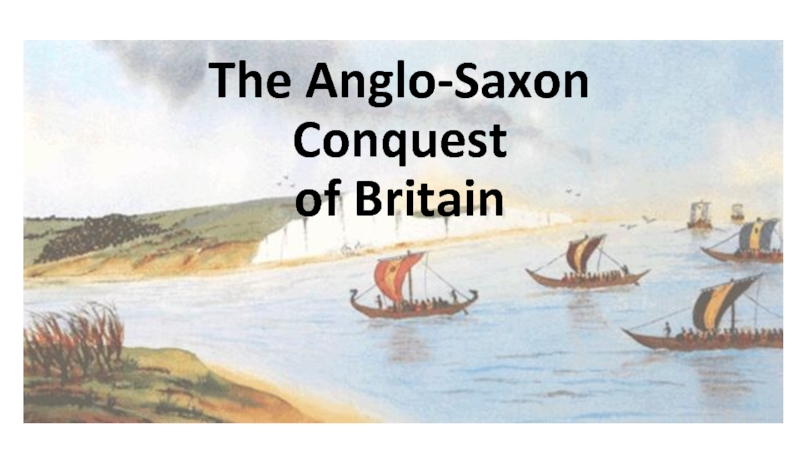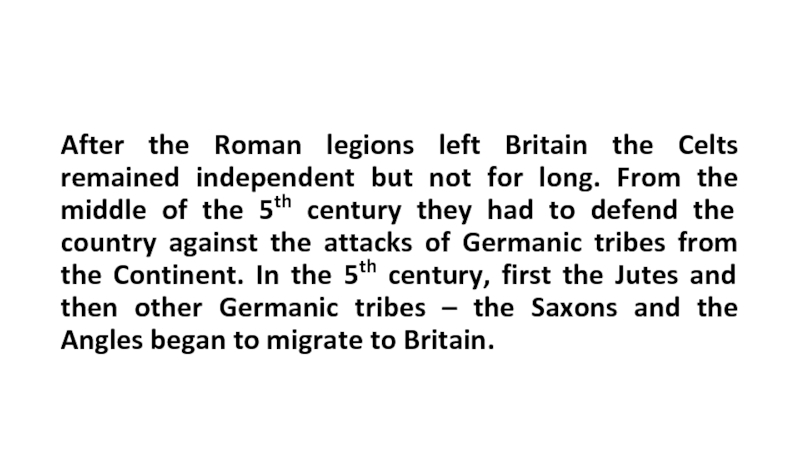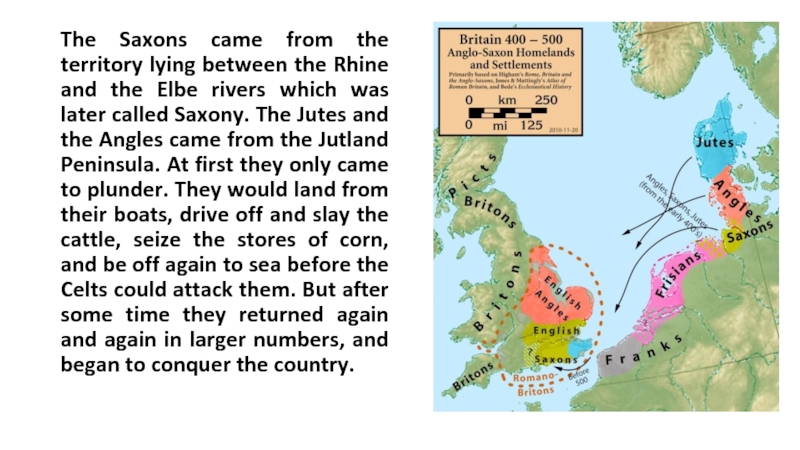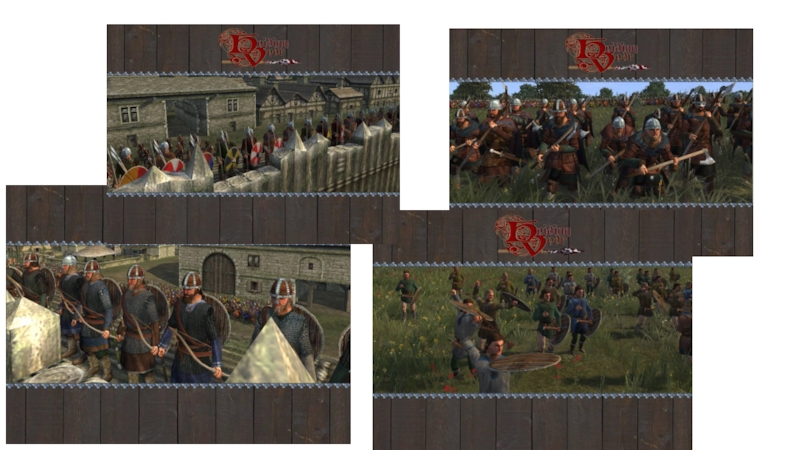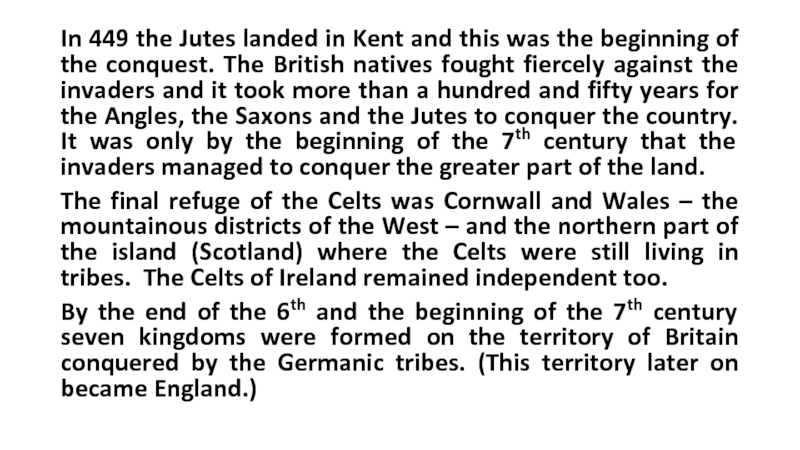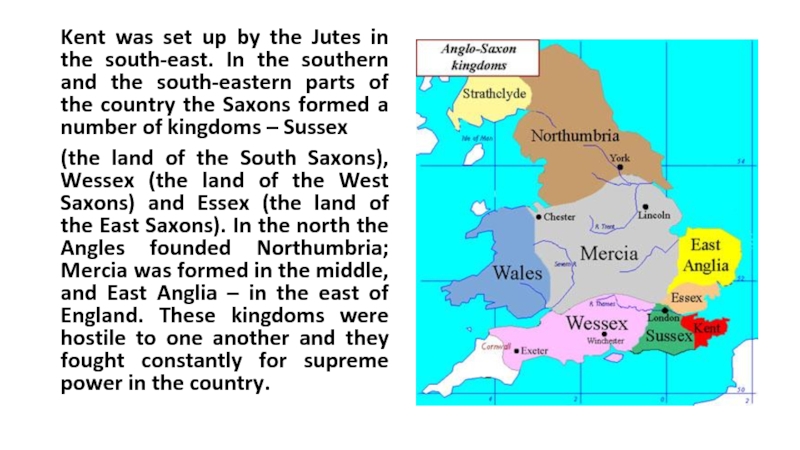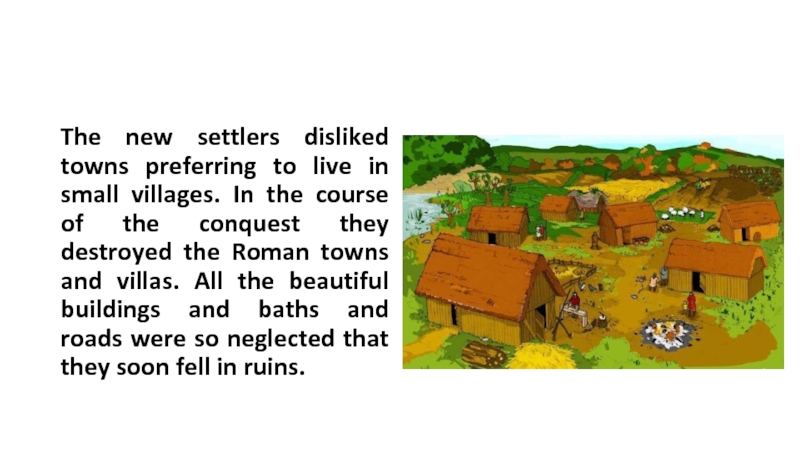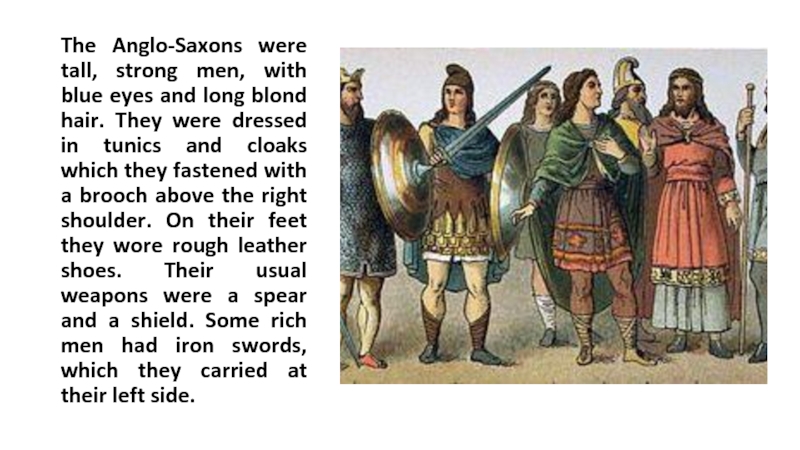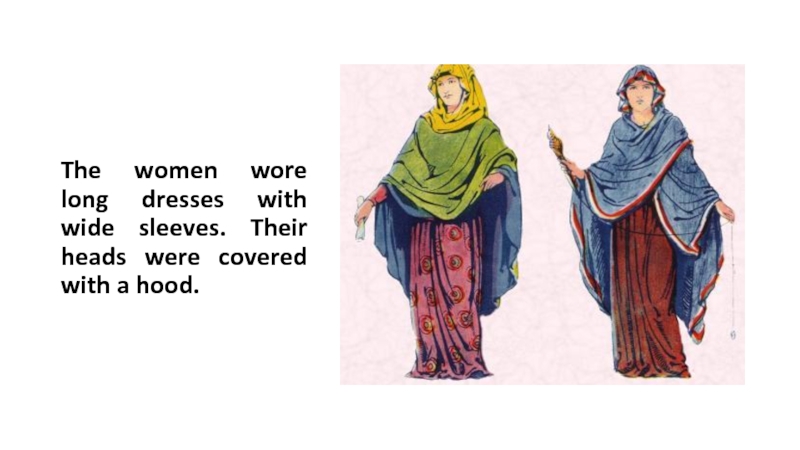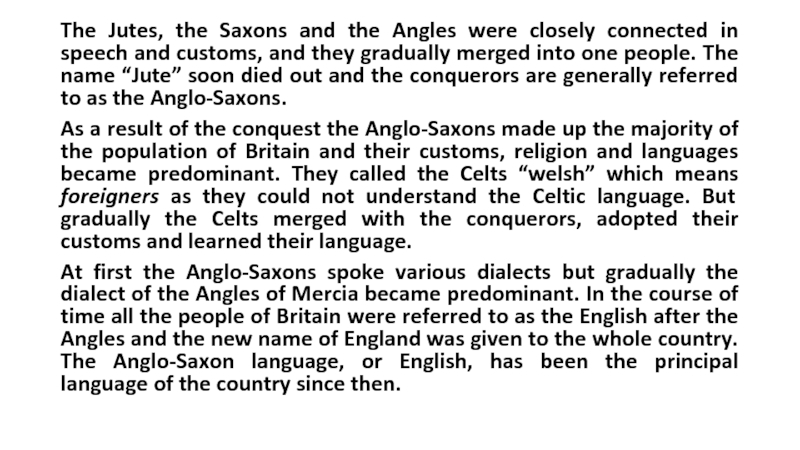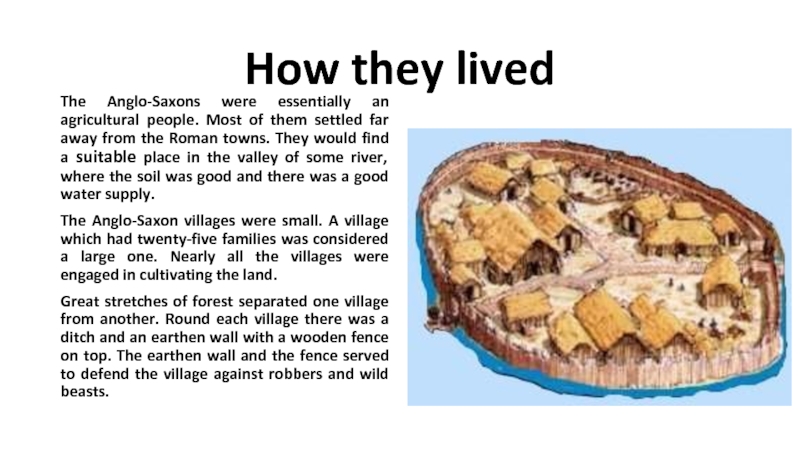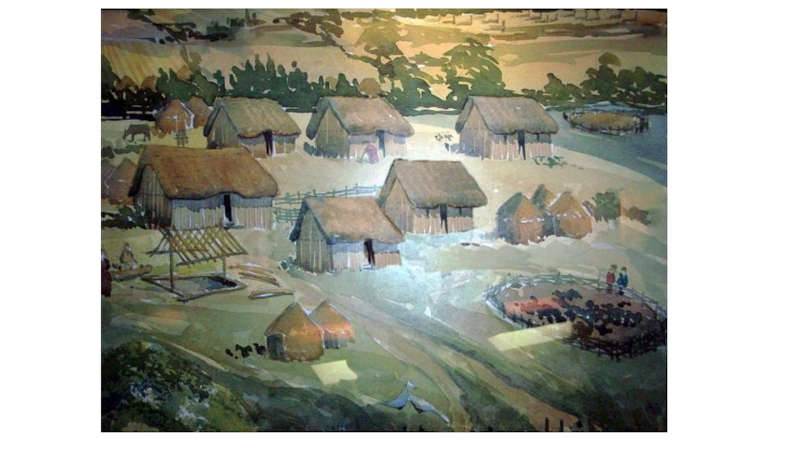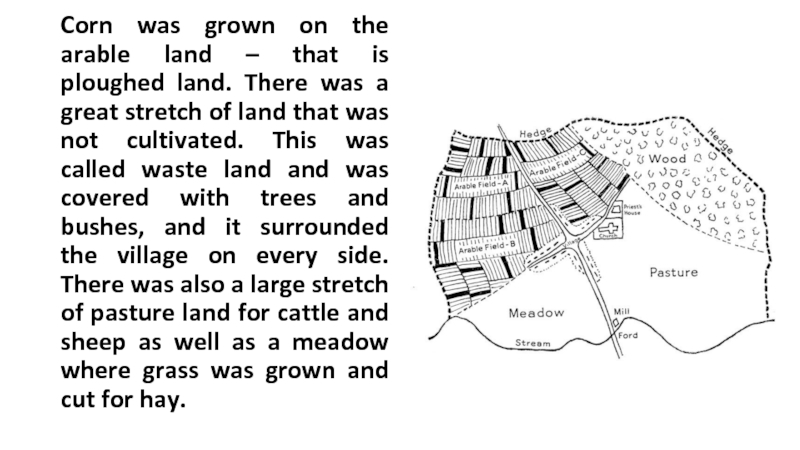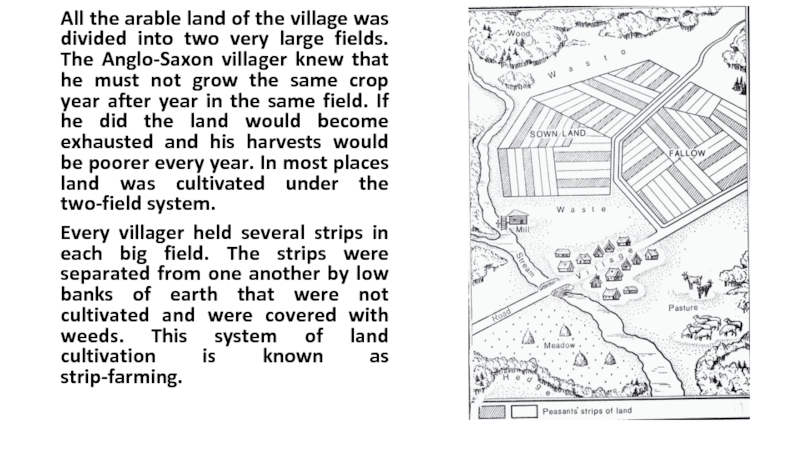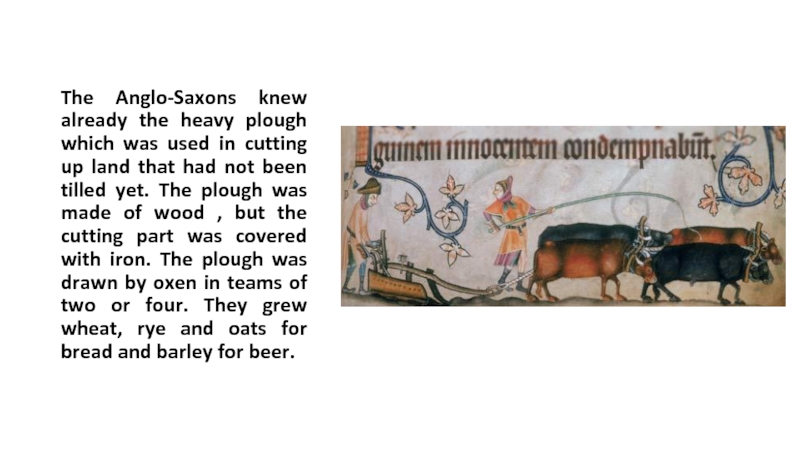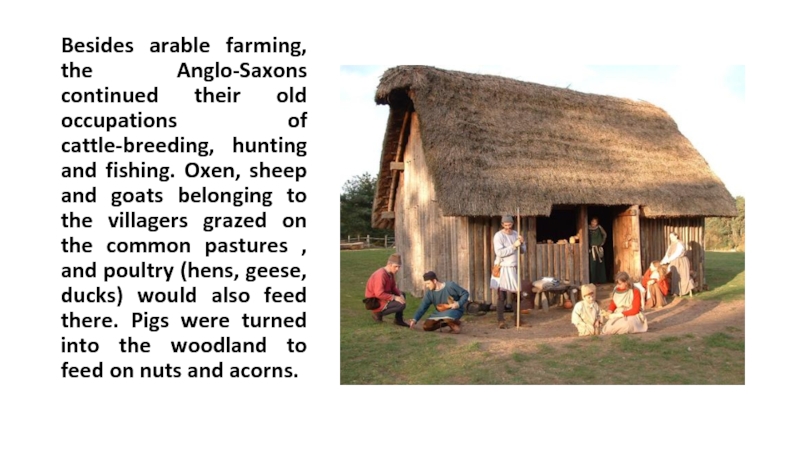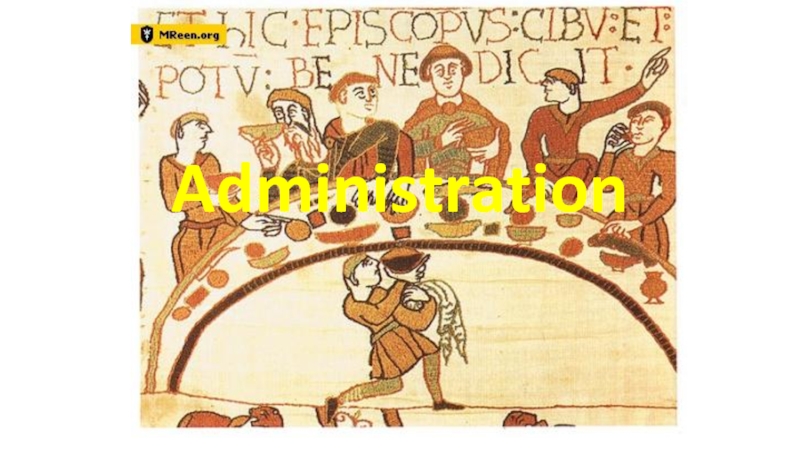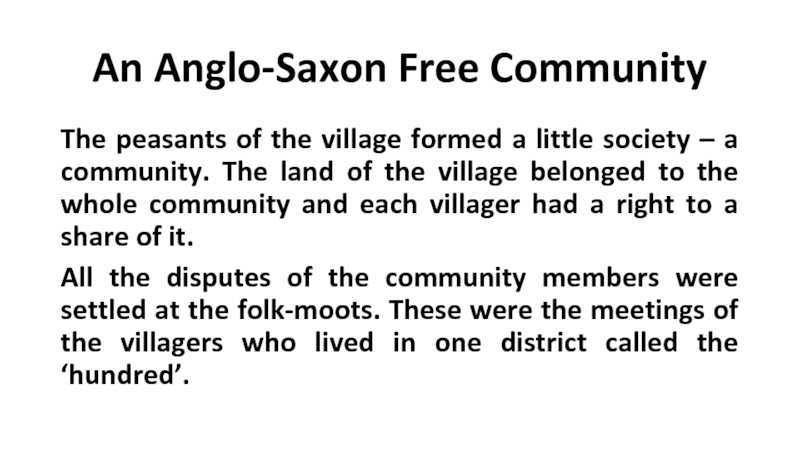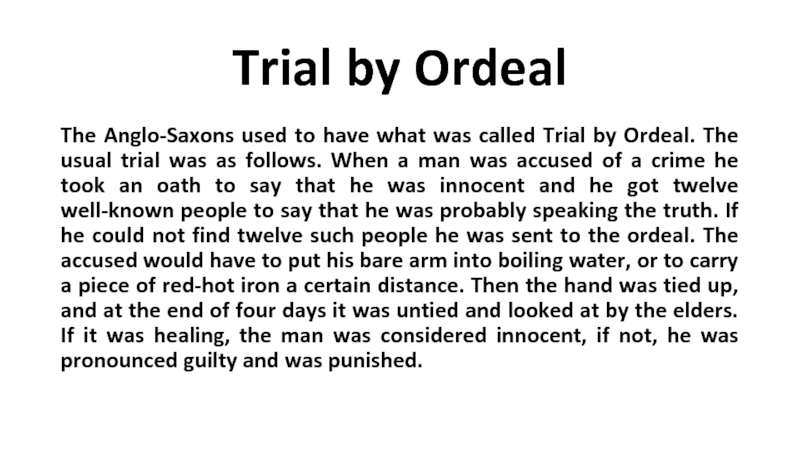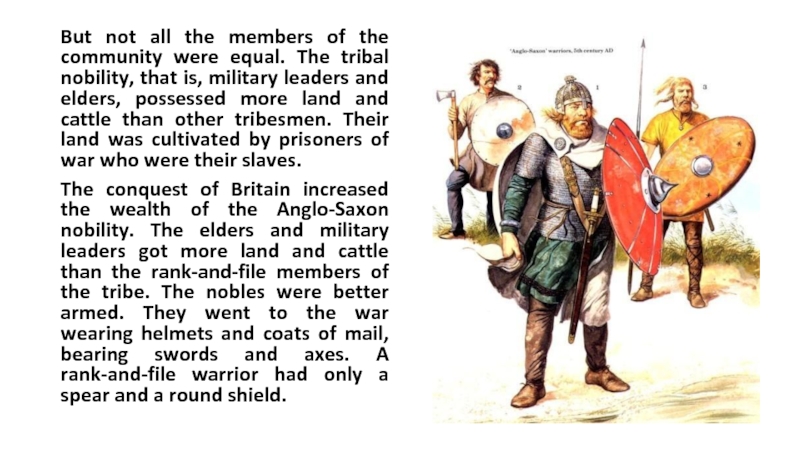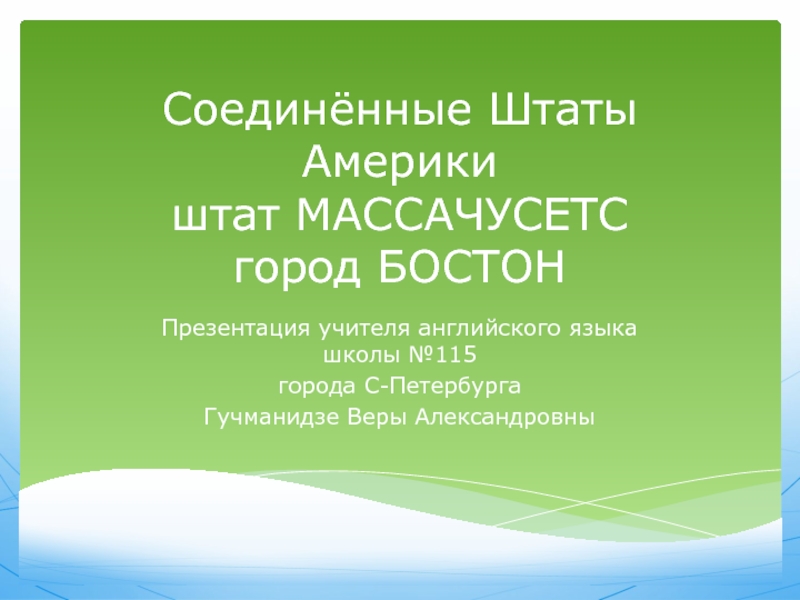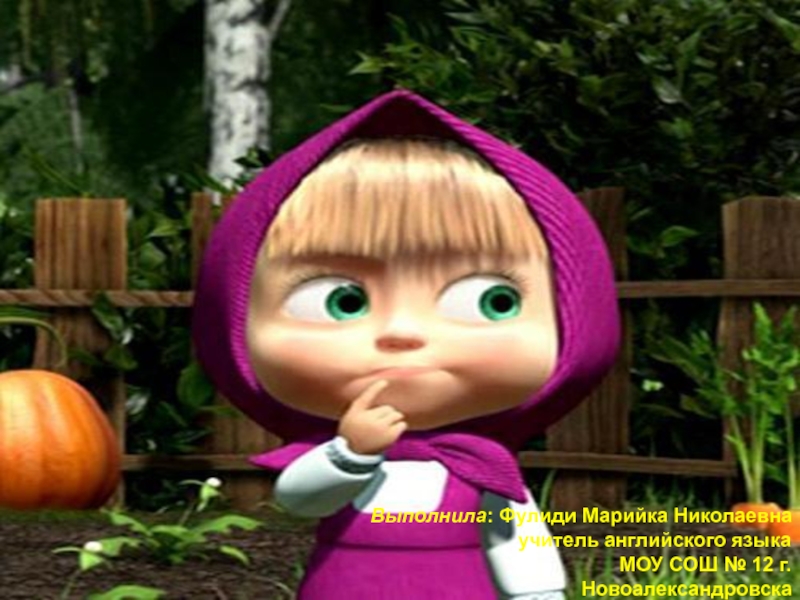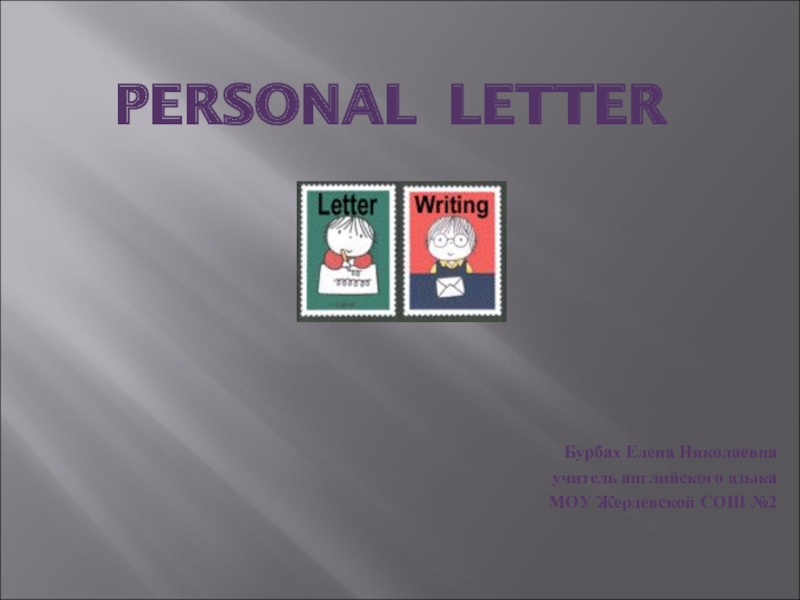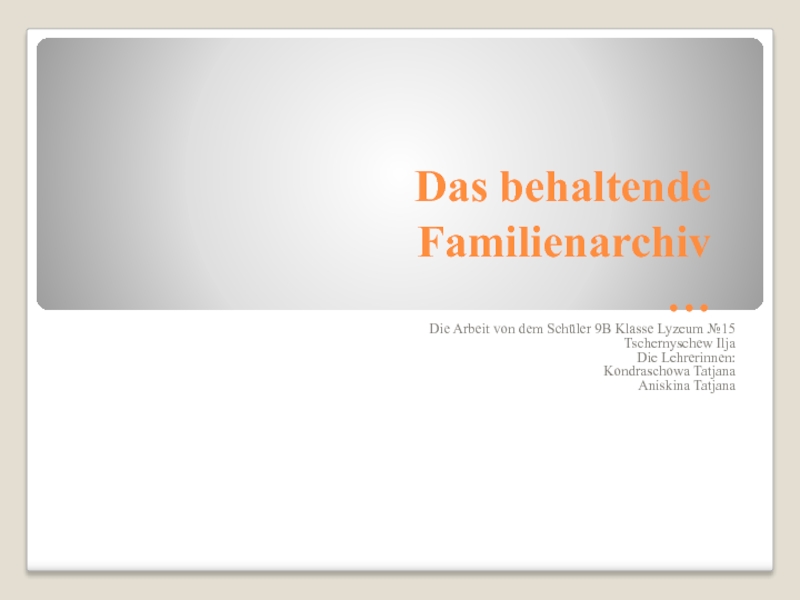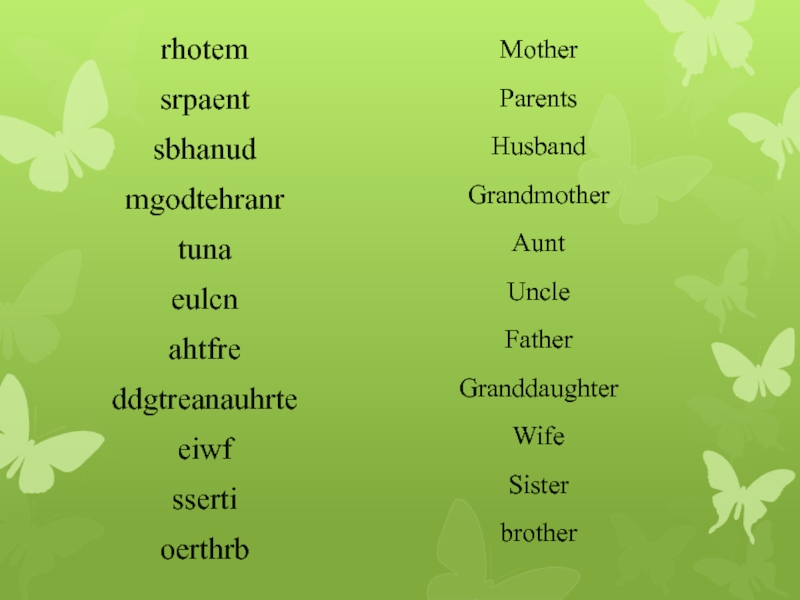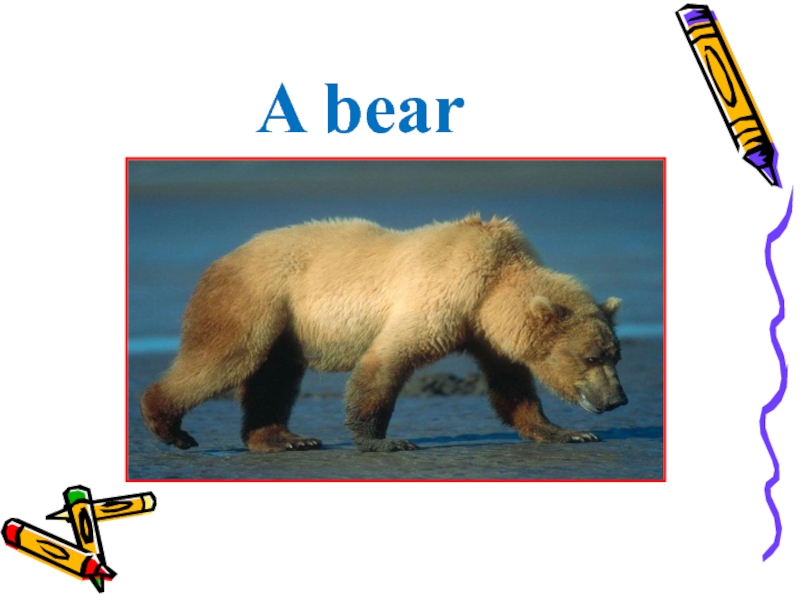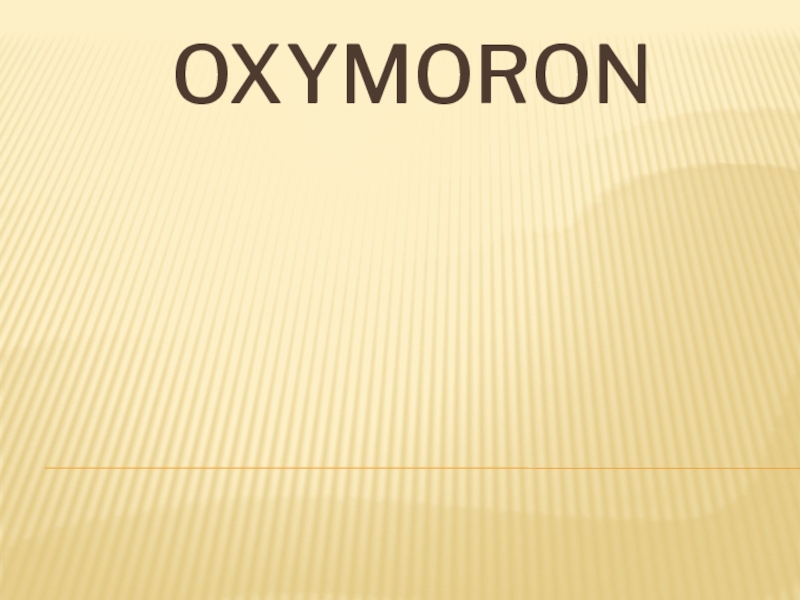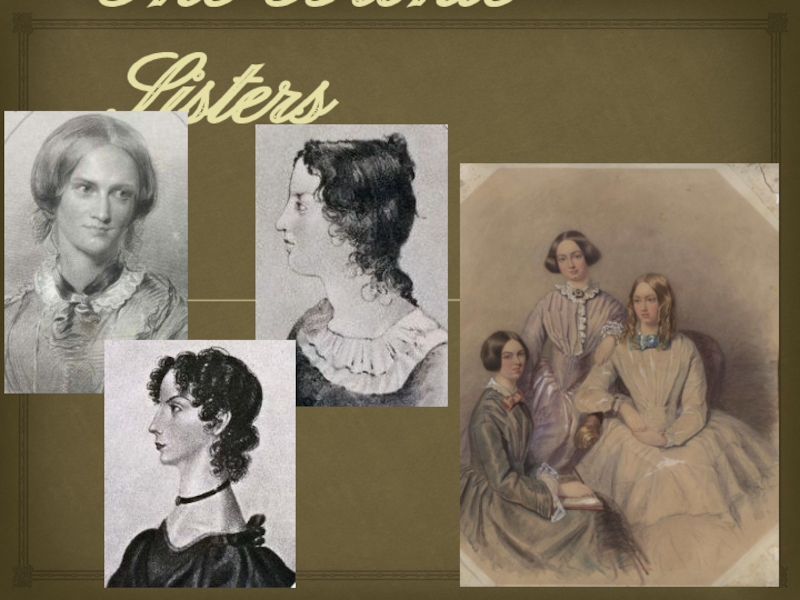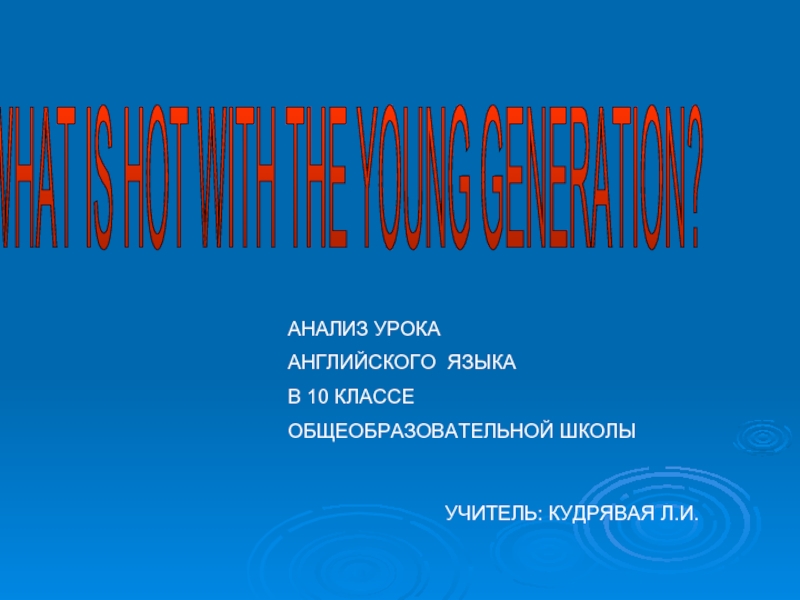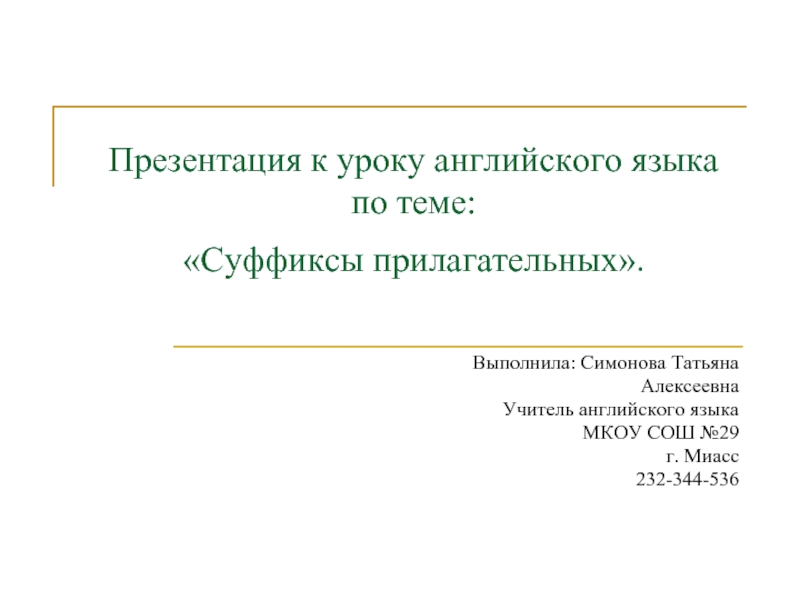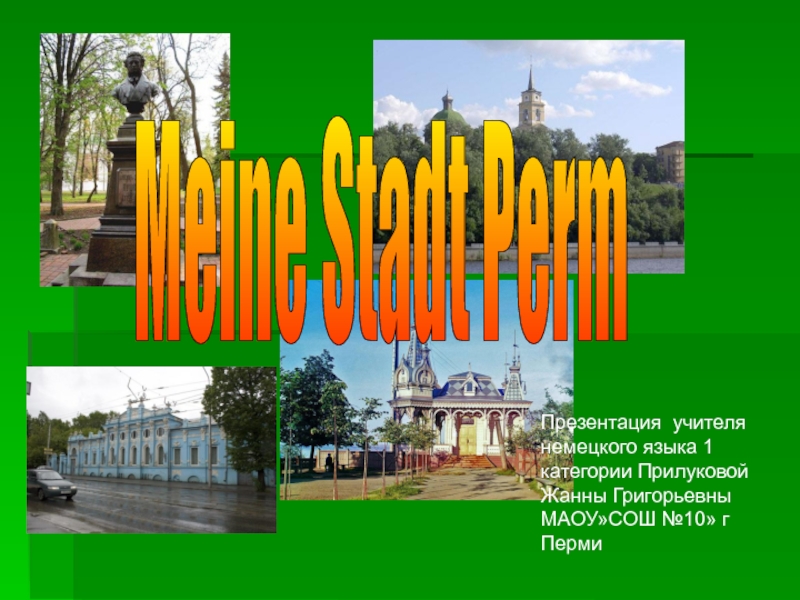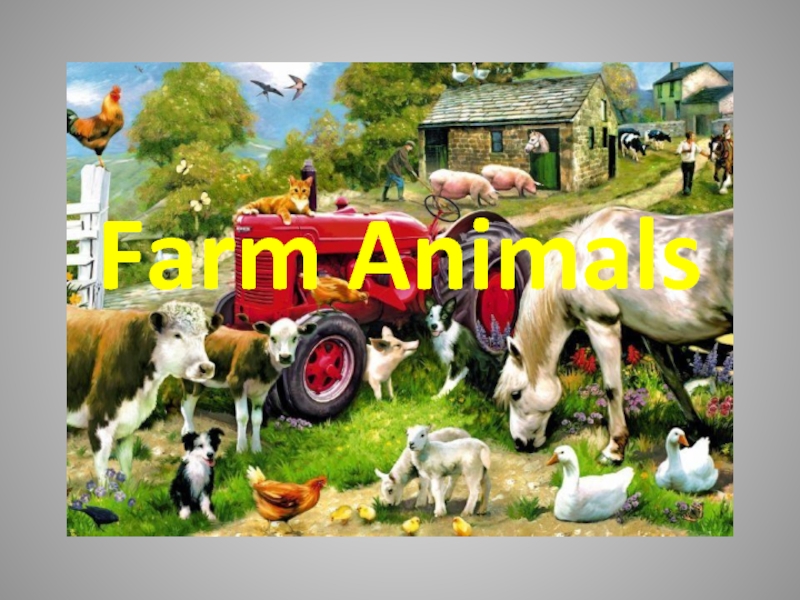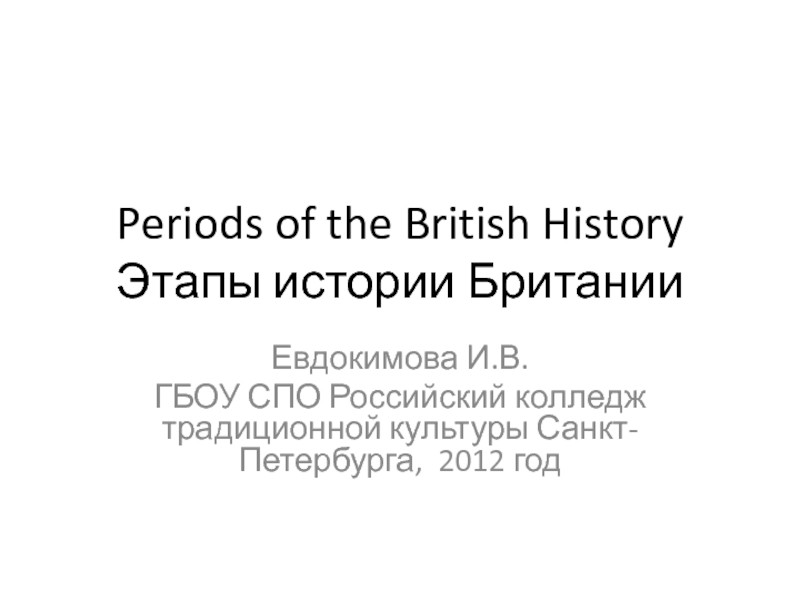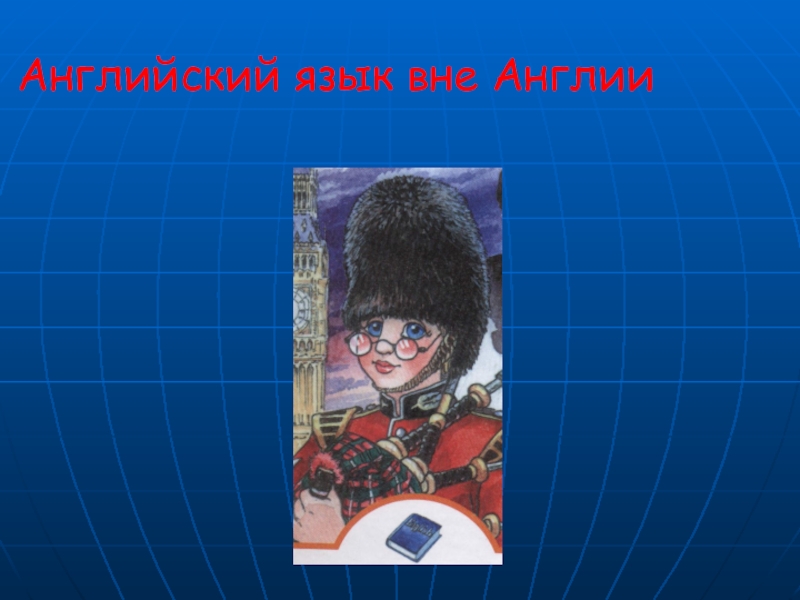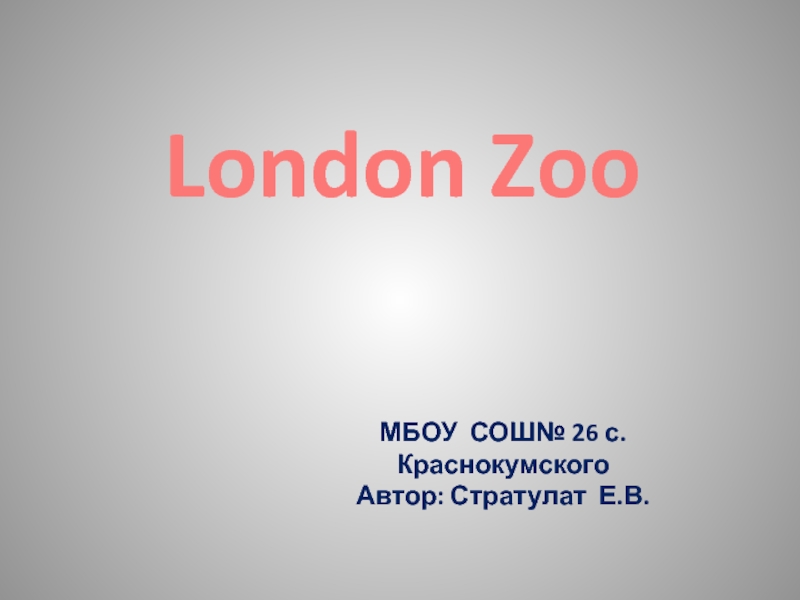Разделы презентаций
- Разное
- Английский язык
- Астрономия
- Алгебра
- Биология
- География
- Геометрия
- Детские презентации
- Информатика
- История
- Литература
- Математика
- Медицина
- Менеджмент
- Музыка
- МХК
- Немецкий язык
- ОБЖ
- Обществознание
- Окружающий мир
- Педагогика
- Русский язык
- Технология
- Физика
- Философия
- Химия
- Шаблоны, картинки для презентаций
- Экология
- Экономика
- Юриспруденция
The Anglo-Saxon Conquest of Britain 9 класс
Содержание
- 1. The Anglo-Saxon Conquest of Britain 9 класс
- 2. After the Roman legions left Britain the
- 3. The Saxons came from the territory lying
- 4. Слайд 4
- 5. In 449 the Jutes landed in Kent
- 6. Kent was set up by the Jutes
- 7. The new settlers disliked towns preferring to
- 8. The Anglo-Saxons were tall, strong men, with
- 9. The women wore long dresses with wide sleeves. Their heads were covered with a hood.
- 10. The Jutes, the Saxons and the Angles
- 11. How they livedThe Anglo-Saxons were essentially an
- 12. Слайд 12
- 13. Corn was grown on the arable land
- 14. All the arable land of the village
- 15. The Anglo-Saxons knew already the heavy plough
- 16. Besides arable farming, the Anglo-Saxons continued their
- 17. Natural EconomyEach village was self-sufficient, that is
- 18. Administration
- 19. An Anglo-Saxon Free CommunityThe peasants of the
- 20. Trial by OrdealThe Anglo-Saxons used to have
- 21. But not all the members of the
- 22. Скачать презентанцию
After the Roman legions left Britain the Celts remained independent but not for long. From the middle of the 5th century they had to defend the country against the attacks of
Слайды и текст этой презентации
Слайд 3The Saxons came from the territory lying between the Rhine
and the Elbe rivers which was later called Saxony. The
Jutes and the Angles came from the Jutland Peninsula. At first they only came to plunder. They would land from their boats, drive off and slay the cattle, seize the stores of corn, and be off again to sea before the Celts could attack them. But after some time they returned again and again in larger numbers, and began to conquer the country.Слайд 5In 449 the Jutes landed in Kent and this was
the beginning of the conquest. The British natives fought fiercely
against the invaders and it took more than a hundred and fifty years for the Angles, the Saxons and the Jutes to conquer the country. It was only by the beginning of the 7th century that the invaders managed to conquer the greater part of the land.The final refuge of the Celts was Cornwall and Wales – the mountainous districts of the West – and the northern part of the island (Scotland) where the Celts were still living in tribes. The Celts of Ireland remained independent too.
By the end of the 6th and the beginning of the 7th century seven kingdoms were formed on the territory of Britain conquered by the Germanic tribes. (This territory later on became England.)
Слайд 6Kent was set up by the Jutes in the south-east.
In the southern and the south-eastern parts of the country
the Saxons formed a number of kingdoms – Sussex(the land of the South Saxons), Wessex (the land of the West Saxons) and Essex (the land of the East Saxons). In the north the Angles founded Northumbria; Mercia was formed in the middle, and East Anglia – in the east of England. These kingdoms were hostile to one another and they fought constantly for supreme power in the country.
Слайд 7The new settlers disliked towns preferring to live in small
villages. In the course of the conquest they destroyed the
Roman towns and villas. All the beautiful buildings and baths and roads were so neglected that they soon fell in ruins.Слайд 8The Anglo-Saxons were tall, strong men, with blue eyes and
long blond hair. They were dressed in tunics and cloaks
which they fastened with a brooch above the right shoulder. On their feet they wore rough leather shoes. Their usual weapons were a spear and a shield. Some rich men had iron swords, which they carried at their left side.Слайд 10The Jutes, the Saxons and the Angles were closely connected
in speech and customs, and they gradually merged into one
people. The name “Jute” soon died out and the conquerors are generally referred to as the Anglo-Saxons.As a result of the conquest the Anglo-Saxons made up the majority of the population of Britain and their customs, religion and languages became predominant. They called the Celts “welsh” which means foreigners as they could not understand the Celtic language. But gradually the Celts merged with the conquerors, adopted their customs and learned their language.
At first the Anglo-Saxons spoke various dialects but gradually the dialect of the Angles of Mercia became predominant. In the course of time all the people of Britain were referred to as the English after the Angles and the new name of England was given to the whole country. The Anglo-Saxon language, or English, has been the principal language of the country since then.
Слайд 11How they lived
The Anglo-Saxons were essentially an agricultural people. Most
of them settled far away from the Roman towns. They
would find a suitable place in the valley of some river, where the soil was good and there was a good water supply.The Anglo-Saxon villages were small. A village which had twenty-five families was considered a large one. Nearly all the villages were engaged in cultivating the land.
Great stretches of forest separated one village from another. Round each village there was a ditch and an earthen wall with a wooden fence on top. The earthen wall and the fence served to defend the village against robbers and wild beasts.
Слайд 13Corn was grown on the arable land – that is
ploughed land. There was a great stretch of land that
was not cultivated. This was called waste land and was covered with trees and bushes, and it surrounded the village on every side. There was also a large stretch of pasture land for cattle and sheep as well as a meadow where grass was grown and cut for hay.Слайд 14All the arable land of the village was divided into
two very large fields. The Anglo-Saxon villager knew that he
must not grow the same crop year after year in the same field. If he did the land would become exhausted and his harvests would be poorer every year. In most places land was cultivated under the two-field system.Every villager held several strips in each big field. The strips were separated from one another by low banks of earth that were not cultivated and were covered with weeds. This system of land cultivation is known as strip-farming.
Слайд 15The Anglo-Saxons knew already the heavy plough which was used
in cutting up land that had not been tilled yet.
The plough was made of wood , but the cutting part was covered with iron. The plough was drawn by oxen in teams of two or four. They grew wheat, rye and oats for bread and barley for beer.Слайд 16Besides arable farming, the Anglo-Saxons continued their old occupations of
cattle-breeding, hunting and fishing. Oxen, sheep and goats belonging to
the villagers grazed on the common pastures , and poultry (hens, geese, ducks) would also feed there. Pigs were turned into the woodland to feed on nuts and acorns.Слайд 17Natural Economy
Each village was self-sufficient, that is most of the
necessities of life were produced in the village itself. The
needs of the villagers were few and simple. Food, clothing and shelter were their basic needs. Arable-farming and cattle-breeding satisfied the needs of the people in the way of foodstuffs, clothing and footwear.There was very little trading at that time. The villagers had little or no money, since they themselves produced most of what they wanted.
Roads were very poor. People did not travel very much. It is very likely that a person born in a village, lived in it all his life and died in it without ever having once left it. They knew nothing of what was going on in the world. To them the village was the world.
Thus, natural economy predominated in Britain in early medieval times.
Слайд 19An Anglo-Saxon Free Community
The peasants of the village formed a
little society – a community. The land of the village
belonged to the whole community and each villager had a right to a share of it.All the disputes of the community members were settled at the folk-moots. These were the meetings of the villagers who lived in one district called the ‘hundred’.
Слайд 20Trial by Ordeal
The Anglo-Saxons used to have what was called
Trial by Ordeal. The usual trial was as follows. When
a man was accused of a crime he took an oath to say that he was innocent and he got twelve well-known people to say that he was probably speaking the truth. If he could not find twelve such people he was sent to the ordeal. The accused would have to put his bare arm into boiling water, or to carry a piece of red-hot iron a certain distance. Then the hand was tied up, and at the end of four days it was untied and looked at by the elders. If it was healing, the man was considered innocent, if not, he was pronounced guilty and was punished.Слайд 21But not all the members of the community were equal.
The tribal nobility, that is, military leaders and elders, possessed
more land and cattle than other tribesmen. Their land was cultivated by prisoners of war who were their slaves.The conquest of Britain increased the wealth of the Anglo-Saxon nobility. The elders and military leaders got more land and cattle than the rank-and-file members of the tribe. The nobles were better armed. They went to the war wearing helmets and coats of mail, bearing swords and axes. A rank-and-file warrior had only a spear and a round shield.
